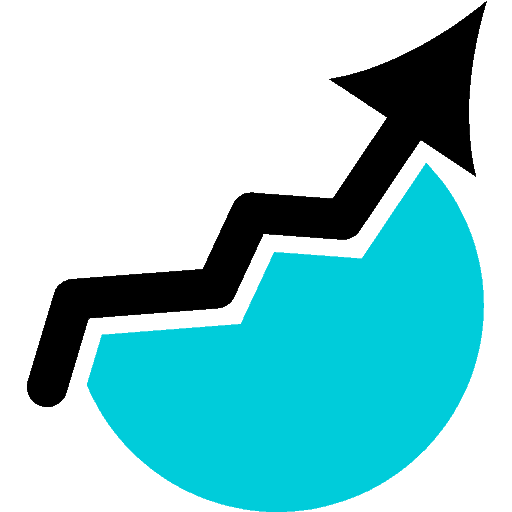How To Build Passive Income
It may sound tempting to roll around your beach house and siding with a drink, but achieving such a high passive income is certainly not easy. On the other hand, it’s not even impossible. Passive income shows that money can buy not only goods and services, but also your own time.
To create passive income, you don’t need to be an investor with many years of experience like Warren Buffett, nor do you have to take unreasonable risks.
With a little effort, a lot of you can figure out how to do it. It does not matter if you have millions from inheritance or deep into your pocket, passive income can be created from scratch.
In this article we will show you everything you should know if you are trying to build passive income. You will learn what passive income is, what can be expected from it, how it is created and how much money you need to achieve the amount of passive income you have set.
What is Passive Income?
The term “passive income” is the income you receive (almost) without any other activity, i.e. without a finger movement. The opposite can be said of a dependable activity that only earns you money if you work. The most common and common forms of passive income are dividends, rental income of real estate, interest on loans, etc.
Robert Kiyosaki stated that: “Passive income is income from capital gains, dividend income, residual business income, real estate rental income and royalties.”
Some people take the term “passive” very strictly and do not consider it a really passive income or renting an apartment, because even there you have to look for a tenant from time to time, check the condition of the apartment, carry out repairs, etc. However, the ratio of this time is insignificant (in most cases), and therefore long-term rental is commonly considered passive income.
Financial independence is also often talked about in the context of passive income. We consider this to be a situation in which a person has a sufficient amount of wealth from which he can live a fulfilled life independently of his active income from work or his own business.
What Is The Difference Between Passive And Active Income?
Passive income is not good to identify with business or addicted activity, as business is something that (as a rule) earns you only if you work. If you stopped doing business, would you still earn the same or more? If the answer is no, it is not passive income, but active income.
The bottom one is whether the criterion that money actually goes into your account without doing anything else is met. In business, passive income can be considered the part that would go into account even without your active participation. However, usually this part will be very small and only short-term.
Note: Not everything is really passive income. Do not confuse passive income and online business, such as income from Youtube, blogging, Instagram, cashback, freelancing, etc. These can be great sources of income and overtime can become 90% passive with only small amounts of work/maitenance needed but for this article we’re going to be focusing on true 100% passive income options.
Why You Should Be Trying To Make Passive Income
The disadvantage of active income is that you are limited by your time.
You can’t work more than 24 hours a day (not that you can work so intensively in the long term…). Similarly, it is with a fixed salary – if you receive, for example, 40,000 a month, it will be difficult to earn significantly more without increasing the base.
Passive income , on the other hand , is virtually unlimited. If you generate passive income while actively earning, you may eventually find yourself in a situation where your passive income exceeds the active income.
Passive income does not require your involvement, does not rob you of time and earns continuously. Achieving it also doesn’t mean you can’t work… Conversely. Many financially independent people continue to be active in work, but not with such intensity, but with much greater appetite and joy.
Passive income is worth pursuing as:
- Experience financial and life flexibility
- You’ll be calmer
- You’ll have income even if you lose your job
- You can achieve financial independence
- Not everyone wants to go to work until the age of 65 and then live with their pension – you can improve
- You don’t do anything, yet you get money
- You learn a lot when you create it
How Do You Build Passive Income?

In principle, the possible ways and forms of building passive income could be divided into two variants:
A) Investing Money
If you have money or are able to (regularly) put off an amount, you can invest that money. This can bring you returns that can either be reinvested or kept. The advantage of reinvestment is the effect of compound interest.
B) Investing Time and Effort
If you don’t have enough money or want a higher passive income faster to build assets, you’ll need to spend your time and effort. Basically, you will be in business (you may need an initial investment) or working a lot.
Online earnings, which are sometimes mistaken for passive income, such as ads on your blog, Instagram, or cashbacks, can also serve relatively well.
How Much Can I Earn From Passive Income?
It’s up to you, the limit practically doesn’t exist. You can earn a few thousand a month, but you can arrange such an income that you will not have to work at all.
Before we start listing the various passive incomes, we will show you how much money and at what annual appreciation you will need to achieve the required level of passive income, as well as how much and how long you will have to save monthly.
1) How Much Money Will You Need?
Below we take a look at the situation where you would like to endlessly direct the same monthly amount – perpetuity (i.e. your capital will remain the same).
We will consider examples of investments that bring you 8, 5 and 3% a year.
Do not take these values completely dogmatically, they are here primarily for illustration, but they can be quite close to real results. The average annual return of a stock fund in the long term is around 8%, many ETFs achieve similar performance, and we consider this level of return to be sustainable in the long term with reasonable risk.
You can take advantage of other alternatives that may well provide a more stable return, but this will usually be lower or riskier. For example, real estate funds can expect a return of around 5% per annum. With bonds, it shouldn’t be a big problem for you to find those that offer you 5-8% a year.
However , the appreciation of 5 % per annum is much closer to the long-term average of inflation. Your investment does not really make much money, even though it is growing in absolute terms.
The 3% appreciation is to illustrate the dividend ETF that pays you dividends. There you can expect (but there are different variants) a dividend yield of around 2-4% per annum, as well as an appreciation of the shares themselves of around 5% per annum. These dividend stocks tend to grow more slowly, as they spend some of their funds on dividends. It’s a kind of compromise between passive income and at the same time growing your portfolio.
Below we have prepared a table for your specific idea. In column 1, the value of the monthly passive income, i.e. your possible “target”, is the value. In the next columns you can see the necessary value of capital that this monthly income would generate for you at different levels of annual appreciation.
It is clear that higher monthly passive income with lower appreciation requires higher capital (and vice versa).
| How much a month do you want? | With 8%, you need | With 5% you need | With 3%, you need |
| 1 000 | 150 000 | 240 000 | 400 000 |
| 5 000 | 750 000 | 1 200 000 | 2 000 000 |
| 20 000 | 3 000 000 | 4 800 000 | 8 000 000 |
| 50 000 | 7 500 000 | 12 000 000 | 20 000 000 |
To someone who doesn’t have a lot of money in their account right now, $2 million can seem like an incredible amount. However, this is not necessarily the case if you have sufficient time and intend to invest regularly.
Let’s take a look at how much you need to save (invest) permonth and how long to save the amount you have collected in the table above.
2) How Much Should You Save?
Now you have an idea of what monthly income you would like. Now you have to answer questions about how long, with what annual appreciation and how much are you able to postpone per month?
Below we have several tables according to the time horizon (i.e. how long you will save before you start drawing the required passive income). In the first column there is a target amount, in the following there is a need fo ra monthly amount , which you will need to invest or save with different annual appreciation.
Compare the table above with the ones below. You can easily go through several amounts of monthly passive income with different percentages from the table above with the real amount that you are able to postpone monthly.
Below you will also find an illustrative example.
Time Horizon 10 Years
| Investment objective | Appreciation 8% | Appreciation 5% | Appreciation 3% | No appreciation |
| 100 000 | 547 | 644 | 716 | 833 |
| 500 000 | 2 734 | 3 220 | 3 579 | 4 167 |
| 1 000 000 | 5 467 | 6 440 | 7 157 | 8 333 |
| 5 000 000 | 27 330 | 32 200 | 35 781 | 41 667 |
| 10 000 000 | 54 661 | 64 399 | 71 561 | 83 333 |
Time Horizon 20 Years
| Investment objective | Appreciation 8% | Appreciation 5% | Appreciation 3% | No appreciation |
| 100 000 | 170 | 244 | 305 | 417 |
| 500 000 | 849 | 1 219 | 1 523 | 2 083 |
| 1 000 000 | 1 698 | 2 433 | 3 046 | 4 167 |
| 5 000 000 | 8 489 | 12 165 | 15 230 | 20 833 |
| 10 000 000 | 16 978 | 24 329 | 30 460 | 41 667 |
Time Horizon 30 Years
| Investment objective | Appreciation 8% | Appreciation 5% | Appreciation 3% | No appreciation |
| 500 000 | 336 | 601 | 859 | 1 389 |
| 1 000 000 | 671 | 1 202 | 1 717 | 2 778 |
| 5 000 000 | 3 355 | 6 008 | 8 581 | 13 889 |
| 10 000 000 | 6 710 | 12 016 | 17 161 | 27 778 |
Time Horizon 40 Years
| Investment objective | Appreciation 8% | Appreciation 5% | Appreciation 3% | No appreciation |
| 500 000 | 144 | 328 | 540 | 1 042 |
| 1 000 000 | 287 | 656 | 1 080 | 2 083 |
| 5 000 000 | 1 433 | 3 277 | 5 400 | 10 417 |
| 10 000 000 | 2 865 | 6 553 | 10 799 | 20 833 |
If you would like to receive a passive income of 20 thousand a month, you will need 4.8 million with a very conservative investment with a return of 5% per year. If you are currently 20 years old, have started work and want to retire in 30 years, you will have to save 6,000 a month with a 5% per year appreciation.
The long-term investment horizon is your friend, but also your enemy in one. You will need a great deal of discipline and perseverance , you will have to renounce anything. During this time, various threats and crises will appear, when you will worry about your money. Unfortunately, these are precisely the reasons that will put most people off and they will not be able to keep their goal.
What Kind Of Investment Will Give You True Passive Income

Now you have an idea of why you want to try to generate passive income, you know how much you might want and how long it will take to save. So let’s take a look at the specific investment options that can result in passive income.
If you are interested in any of the alternatives below, do not hesitate to click on the link where we deal with the topic in sufficient detail.
- Dividend shares – Some companies pay shareholders a share of the company’s profits in the form of dividends. Just register with a broker and buy a title like this. Philip Morris, for example, is a great example of dividend stocks.
- Mutual funds – Funds offer the possibility of automatic disbursing of money here and there, but this is not very common. You should also beware of fees, which tend to be high for many mutual funds.
- ETFs – Exchange Traded Funds allows you to diversify widely, invest easily and return accordingly. There are also so-called dividend ETFs that will pay you the dividend you receive on an ongoing basis.
- Investment platforms – This is a modern alternative to funds. Investments and diversification are automatically carried out and as a result there are significantly lower fees. Check out our separate section if you’d like to learn more about investment platforms. Among other things, you will see some detailed reviews of the best platforms we have prepared.
- Bonds – The principle is simple, just send money to the issuer (buy a bond) and he will pay you the set return. At the end, your principal will also be returned. Many bonds offer interest payments on a monthly basis, some on a quarterly basis. In the case of monthly payment, this can be quite an interesting variant of passive income. Be careful when choosing to get the full principal returned (e.g. the issuer must not fail). In specific numbers – e.g. 100,000 with 5% interest – it can generate about 500 per month.
- Real estate rental – It’s a long run, but real estate has been considered one of the best investments for decades. It can be a long-term or short-term rental of an apartment, but also, for example, a garage, etc.
- P2P loans – Many small investors lend to other people together. This is how P2P investmentswork , which can also be an interesting alternative to passive income.
- Buying an existing business – If you manage to buy an already started business, you can make a profit for some time without your own help. But you’ll definitely need a large amount of money, maybe enough of your time, and the business probably won’t work indefinitely without your involvement (or you can hire a professional manager). Alternatively, you can invest in the business as a silent partner. However, this is a rather complex variant of passive accept.
- Self-service facilities – Various vending machines for drinks, coffee, parking tickets, self-service laundries, slot machines, photo booths, etc.
You can get started with investing using services like Robinhood, read more about that here.
In Conclussion
Passive income is definitely not free, it will cost you a lot of work, effort and, above all, time. But it’s definitely something worth it in the long run.
Start by building wealth, increasing income, and fixing your relationship with money – from there you can work towards creating passive income.
- How to Save Money on Marketing (Without Scaling Back) - October 15, 2022
- Become Your Own Marketing Department With These Essential Tips - October 5, 2022
- The 100 Best Money Quotes of All Time - August 16, 2022








